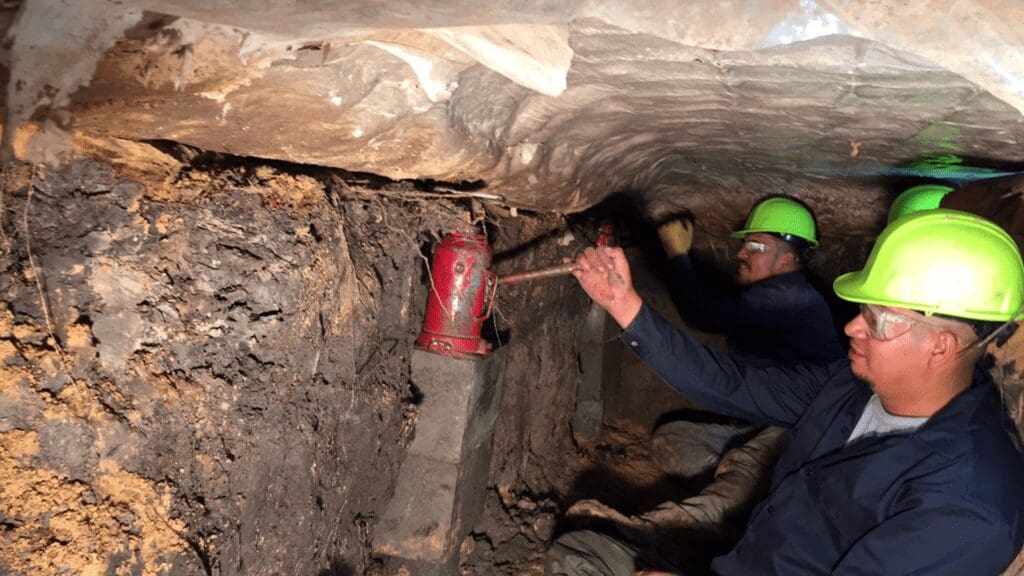Pier and beam foundations are most appropriate for the homes located in areas that have expansive clay soils and are also prone to flooding. However, slab-on-grade foundations can be just as durable when built correctly. Irrespective of what type of foundation you have, it must be exceptionally sturdy in order to carry the whole weight of your home for decades and amidst ever-changing climate conditions and weather patterns. Because foundations usually get damaged with time, using driven concrete piers or pile guard piers to fix a foundation is the only long-term repair solution that we recommend. Why? Simply because it works every time!
Why Should You Opt for Concrete Piers?
The answer to this question becomes clear once you discover the benefits of choosing concrete piers instead of steel piers. These are:
- Stability
In order to fix a failing foundation, the piers must be driven to the point of refusal. Although both steel and concrete piers are usually installed correctly by experienced contractors, problems could arise when one or more steel piers aren’t pushed all the way down to a suitable soil-bearing layer. When steel piers don’t reach a suitable bearing stratum, they can move, which may cause additional foundation issues that will require repairs. What’s more, when a steel pier is installed crooked or is loosely fitted into the soil, water runoff can flow down the pier into the ground and accumulate around it. Because clay soil is able to absorb and hold large quantities of water, it may become too soft to keep the pier upright in its initial position. As a result, the foundation may start to shift, leaving home unstable.
Concrete piers are much heavier than steel piers and strong enough to ensure the stability of the entire structure. While it’s true that these piers can’t be installed as deep into the ground as steel piers, most areas in and around Houston don’t have extremely deep soils. In many locations across Houston, the point of refusal is achieved at depths of 6 to 10 feet. Therefore, concrete piers don’t generally need to be driven deeper than 10-15 feet into the ground in order to provide the required uplift capacity and remain stable over time.
What’s more, because driven concrete piers and/or pile guard piers are installed with the help of a unified hydraulic jacking system, they’re driven without exception through unstable clay soils to the point of refusal, which basically means until solid strata or bedrock is reached. Once all the concrete piers are in position, they’re load-tested separately to a force greater than the home’s weight. Load testing performed by qualified professionals is a very important step because it ensures that the repaired foundation can carry the load of the entire structure. After all the piers are tested, they’re connected to the foundation with steel brackets and locked in place with steel cable.
- Durability
According to research from the National Bureau of Standards, steel piers rust over time. While rust may not immediately and significantly affect the strength and durability of the steel piers buried in the ground, it can go undetected until extensive damage occurs. This could negatively affect the structural integrity of your home. Because the rate at which buried steel piers rust depends on the corrosiveness of the soil, soil water content, and oxygen concentration, which can vary greatly from place to place, no one can actually predict the life expectancy of these piers. Even the coatings that are sometimes applied to steel piers for added protection cannot guarantee or extend their estimated lifespan. In fact, recent research has revealed that the abrading that occurs during the coating application process can decrease the life expectancy of steel.
Some people argue that foundation repair contractors also use brackets and cables that are made of steel in order to secure concrete piers. However, these elements are installed above the ground, which means they can be inspected regularly and replaced whenever necessary.
- Cost
Compared to concrete, steel costs considerably more to produce. As well, the equipment required to install steel piers is more expensive than the equipment necessary to install concrete piers. Because the extra costs are passed on to customers, opting for steel piers instead of concrete piers often leads to a higher foundation repair bill. The question is: Why would a homeowner spend more money on steel piers when concrete piers can do the job just as well, if not better?
Whether you’re experiencing major foundation damage or just some minor problems, choosing the best contractor for the job is just as important as opting for the most appropriate repair method. At Allied Foundation, our specially trained staff can expertly and expeditiously install driven concrete piers and/or pile guard piers as well as make any other foundation repairs required, so you can rest assured knowing that your home is structurally sound again! Give us a call today for a free consultation and repair estimate!

